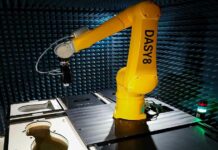The Cambridge University researchers have gone on to find a way to come up with very low-emission concrete, and that too on a commercial scale, by way of using recycled concrete as well as electricity-powered arc furnaces. Since the latter happens to be employed in the case of steel recycling, steel can as well be made use of in the recycling cement process.
The researchers post this also went on to discover that the used cement can very well be a substitute when it comes to lime flux so as to produce recycled cement, after which this recycled cement can be made use of to make new low-emission concrete.
It is well to be noted that lime flux happens to be an important element when it comes to recycling, which helps in eradicating impurities; however, it often ends up being a waste product when it comes to the manufacturing process. So as to avoid this rise in waste, the used cement might as well take over the position with the recyclability trait, which can in turn help in making low-emission concrete, and that too at a commercial level. The fact is that this new method concerning the recycling of cement does not add any major costs to the concrete or even steep production, say the researchers from Cambridge. Rather, they can help in decreasing the carbon emissions from the concrete as well as the steel since there happens to be a reduced requirement for lime flux.
According to Dr. Cyrille Dunant from Cambridge University’s Department of Engineering and also the study author, crushing the old concrete can also help in taking out the sand as well as stones. Thereafter, heating it can also eradicate the water that’s mixed in, and it would then form a clinker again.
It is worth noting that cement gets made by way of a process known as clinkering wherein the limestone as well as other raw materials get crushed as well as heated at almost 1450 degrees Celsius, and that too in large kilns.
Notably, a bath of liquid metal can as well help the chemical reaction, and an electric arc furnace that’s used to recycle the steel is indeed a pretty strong possibility, says Dr. Dunant. The fact remains that the clinkering process does need heat as well as the right mix of oxides, which happened to be in used cement; however, they have to be reactivated. The researchers went on to test many kinds of lime flux made out of demolition waste, as well as added lime, silica, and alumina, and they got processed at the Materials Processing Institute’s EAF along with molten steel and thereafter quickly cooled.
Finally, the Cambridge researchers did find out that the mix of cement clinker and iron oxide.
The scientists went on to discover that the cement in concrete can very well be replaced.
Cement can go on to contribute to almost 90% of the concrete emissions, although it makes up only a very limited portion of the concrete mix. Concrete also happens to be the second most used material, only second to water, and happens to be responsible for almost 7.5% of the overall carbon emissions.
Due to this, the researchers went ahead to find out an option to decrease concrete emissions by way of making it along with recycled cement. The scientists have already gone on to explore that 50% of the cement within the concrete can very well be replaced by way of alternative materials such as fly ash, but the challenge is that such alternatives require chemicals to work as well as harden the cement, which may as well not be as helpful to the ecology as one might think it to be. In order to look out to have a functional alternative, researchers made an attempt to initially crush the old concrete.
For the Cambridge researchers, knowing how to create low-emission concrete by way of using recycled cement is a miracle in every sense. The challenge that the sector should take into account is to decrease the amount of cement as well as concrete that is used.
For Professor Julian Allwood from the Department of Engineering at Cambridge University, the varied sectors happen to be making use of concrete way too much. It is indeed strong, affordable, and everywhere, all of which contribute to the majority of its usage. He says that this is undoubtedly a very exciting project and is, in every sense, going to have a massive impact. The cement sector accounts for around 8% of the human-caused CO2 emissions, which happens to be more than any country expects from the US as well as China.
The fact remains that almost 14 billion cubic meters of concrete happen to get cast annually, as per industry statistics, and more are still going to be required as cities as well as economies grow in the times to come. The IEA- International Energy Agency opines that if the emissions coming out of cement sector consistently rise, the pledge pertaining to carbon neutrality by 2050 is going to remain at large.
There are numerous efforts made to come up with low-carbon or even green cement, but these are very expensive and also challenging to roll out at scale. They depend on technology that is unproven or does not come near zero emissions.
The researchers went on to approach the problem by way of looking at steel recycling, a sector that happened to be established already and which makes use of furnaces that are electric powered in order to produce alloy. They went ahead and substituted a major ingredient in the process along with the old cement that was sourced from buildings that were demolished. Rather than the waste being produced, the end result was recycled cement ready for use in concrete, thereby bypassing the process of superheating the limestone within the kilns, which is anyway emissions heavy. The method, which, as a matter of fact, has a pending patent process, was a very low disruption innovation needing very little change. If they get powered by renewable energy, these furnaces can very much hope to produce zero-emissions concrete, and that too at scale.
As per Allwood, this can also be a big and bright hope.




























